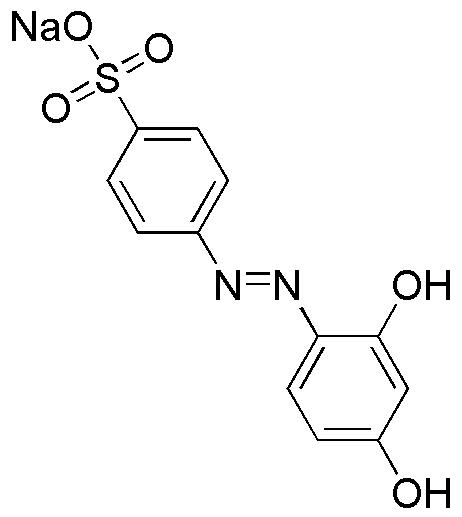Tropaeolin O is widely utilized in research focused on:
- Dyeing and Pigmentation: Commonly used in the textile industry as a dye due to its vibrant color, enhancing the aesthetic appeal of fabrics.
- Biological Staining: Employed in histology and microbiology for staining tissues and cells, aiding in the visualization of cellular structures under a microscope.
- pH Indicator: Acts as a pH indicator in various chemical analyses, providing a visual cue for acidity or alkalinity in solutions, which is crucial in laboratory settings.
- Analytical Chemistry: Used in spectrophotometry for quantitative analysis of substances, allowing researchers to determine concentrations of compounds in solutions effectively.
- Environmental Monitoring: Applied in assessing water quality by detecting the presence of certain pollutants, thereby contributing to environmental protection efforts.
General Information
Properties
Safety and Regulations
Applications
Tropaeolin O is widely utilized in research focused on:
- Dyeing and Pigmentation: Commonly used in the textile industry as a dye due to its vibrant color, enhancing the aesthetic appeal of fabrics.
- Biological Staining: Employed in histology and microbiology for staining tissues and cells, aiding in the visualization of cellular structures under a microscope.
- pH Indicator: Acts as a pH indicator in various chemical analyses, providing a visual cue for acidity or alkalinity in solutions, which is crucial in laboratory settings.
- Analytical Chemistry: Used in spectrophotometry for quantitative analysis of substances, allowing researchers to determine concentrations of compounds in solutions effectively.
- Environmental Monitoring: Applied in assessing water quality by detecting the presence of certain pollutants, thereby contributing to environmental protection efforts.
Documents
Safety Data Sheets (SDS)
The SDS provides comprehensive safety information on handling, storage, and disposal of the product.
Product Specification (PS)
The PS provides a comprehensive breakdown of the product’s properties, including chemical composition, physical state, purity, and storage requirements. It also details acceptable quality ranges and the product's intended applications.
Certificates of Analysis (COA)
Search for Certificates of Analysis (COA) by entering the products Lot Number. Lot and Batch Numbers can be found on a product’s label following the words ‘Lot’ or ‘Batch’.
Número de catálogo
Número de lote/lote
Certificates Of Origin (COO)
This COO confirms the country where the product was manufactured, and also details the materials and components used in it and whether it is derived from natural, synthetic, or other specific sources. This certificate may be required for customs, trade, and regulatory compliance.
Número de catálogo
Número de lote/lote
Safety Data Sheets (SDS)
The SDS provides comprehensive safety information on handling, storage, and disposal of the product.
DownloadProduct Specification (PS)
The PS provides a comprehensive breakdown of the product’s properties, including chemical composition, physical state, purity, and storage requirements. It also details acceptable quality ranges and the product's intended applications.
DownloadCertificates of Analysis (COA)
Search for Certificates of Analysis (COA) by entering the products Lot Number. Lot and Batch Numbers can be found on a product’s label following the words ‘Lot’ or ‘Batch’.
Número de catálogo
Número de lote/lote
Certificates Of Origin (COO)
This COO confirms the country where the product was manufactured, and also details the materials and components used in it and whether it is derived from natural, synthetic, or other specific sources. This certificate may be required for customs, trade, and regulatory compliance.


